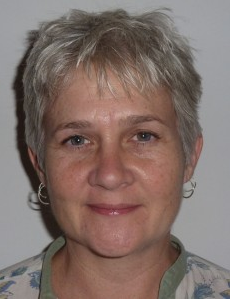About Us
History
In 1979 Paul Fine and Jorg Ponnighaus initiated a programme of research in Karonga district, northern Malawi, to study the natural history of leprosy in an endemic area and to evaluate the effectiveness of ongoing methods for its control.
After a pilot study, a first total population survey, known then as the Lepra Evaluation Project (LEP-1), was carried out from 1980 to 1984. This involved interview and examination of more than 112,000 individuals, virtually the entire Karonga District population of the time.
Information was collected on household location (originally using an aerial photo grid system accurate to 10 m, and subsequently converted to GIS coordinates) and composition, socio-economic indicators, family pedigrees and demographic details. All individuals were examined for leprosy, more than 70,000 were skin tested with mycobacterial antigens (mainly RT23 tuberculin) and more than 25,000 contributed a blood specimen (usually fingerprick) for serological assays. Leprosy suspects were biopsied and sputa from all TB suspects were cultured. Methods were established in this survey to uniquely identify individuals and their parents that have formed the basis of many studies since, allowing us to trace individuals reliably over 30 years.
A second total population survey (LEP-2) was carried out from 1986 through 1989, to measure incidence since the first survey, and as a recruitment phase of a vaccine trial designed to evaluate the efficacy of one versus two BCG vaccinations versus a WHO-sponsored vaccine composed of killed M leprae bacilli and BCG, in protecting against both leprosy and tuberculosis. More than 140,000 individuals were interviewed and examined, and more than 120,000 were randomized to receive vaccine or placebo. Approximately 20,000 skin tests were carried out (mainly RT23 tuberculin) and 25,000 blood samples were collected during the survey.
Trial follow-up continued from 1990–96. The trial codes were broken in 1995, revealing that BCG vaccination was providing appreciable protection against leprosy (50% by one dose, 75 % by two doses) but no protection at all, by either one or two doses, against tuberculosis.
Case control studies of HIV as a risk factor for leprosy and tuberculosis were started in this period, and continued in further programmes to document the changing epidemiology of HIV and tuberculosis. Surprisingly, although HIV greatly increases the risk of tuberculosis, it does not increase the risk of leprosy.
From 1996 the study was largely funded by the Wellcome Trust with a series of programme grants: 1996-2001, led by Paul Fine and Hazel Dockrell; 2001-6, led by Paul Fine, Hazel Dockrell, Basia Zaba; 2006-12, led by Neil French, Judith Glynn, Hazel Dockrell, Basia Zaba, Mia Crampin.
Studies initially built on findings of the trial and the opportunities of the long-term population based data to study: genetics of leprosy and tuberculosis; immune responses to BCG (comparing Malawi and the UK), molecular epidemiology of tuberculosis (using RFLP until 2008 and now whole genome sequencing); and the development and impact of the HIV epidemic, including molecular epidemiology and work on fertility. A demographic surveillance site was started in the southern part of the district in 2002 and work on pneumococcal disease was started by Neil French in 2007.
Many of these areas of work continue, and can be explored in other sections.
A major new focus on non-communicable diseases was added in 2012, with a Wellcome Trust Strategic Award led by Moffat Nyirenda, with Mia Crampin, Judith Glynn, Charles Mwansambo and Basia Zaba, and an urban site in Lilongwe was added to allow urban-rural comparisons.
Our team




